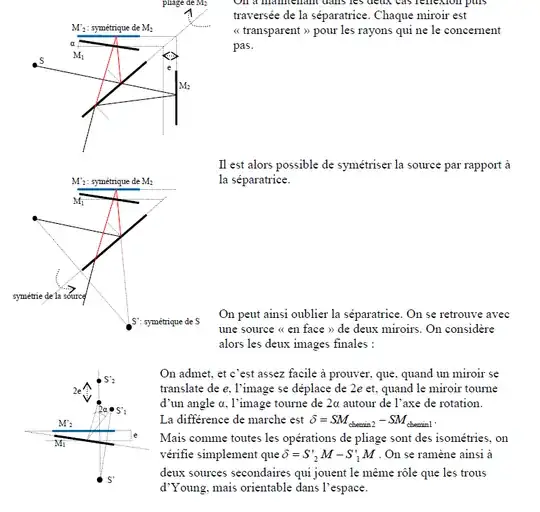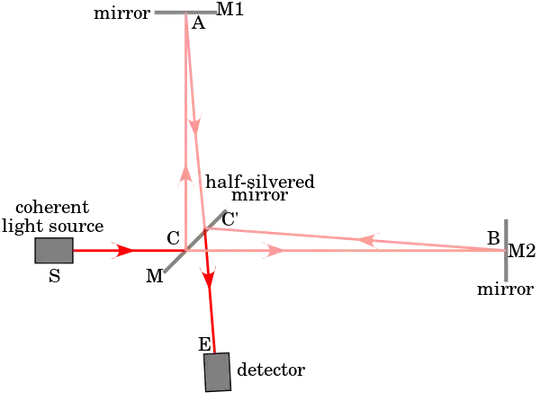 It is much easier to "fold" the interferometer. If you imagine that there is a lens of short focal length at the exit of the laser, (otherwise, the rays do not diverge), you have a point source S which after reflection on the separator and the mirrors has two images S1 and S2 at the top, distant from $2d$. (When you move a mirror by $d$, the image move by $2d$)
It is much easier to "fold" the interferometer. If you imagine that there is a lens of short focal length at the exit of the laser, (otherwise, the rays do not diverge), you have a point source S which after reflection on the separator and the mirrors has two images S1 and S2 at the top, distant from $2d$. (When you move a mirror by $d$, the image move by $2d$)
If the screen is at a sufficiently large distance, the rays emitted by S1 and S2 which interfere at E are practically parallel and the difference in the path is $\delta =2d\cos (\theta )$ (if there is no additional phase shift due to reflections on the mirrors ).
The bright rings correspond to $\delta =2d\cos ({{\theta }_{n}})=n\lambda $ and the rings on the screen are obtained by writing $\tan ({{\theta }_{n}})\approx {{\theta }_{n}}={{R}_{n}}/D$ if $D$ is the distance of the sources on the screen.
Be careful : the order of interference is maximum in the center and decreases when one moves away from the center.

